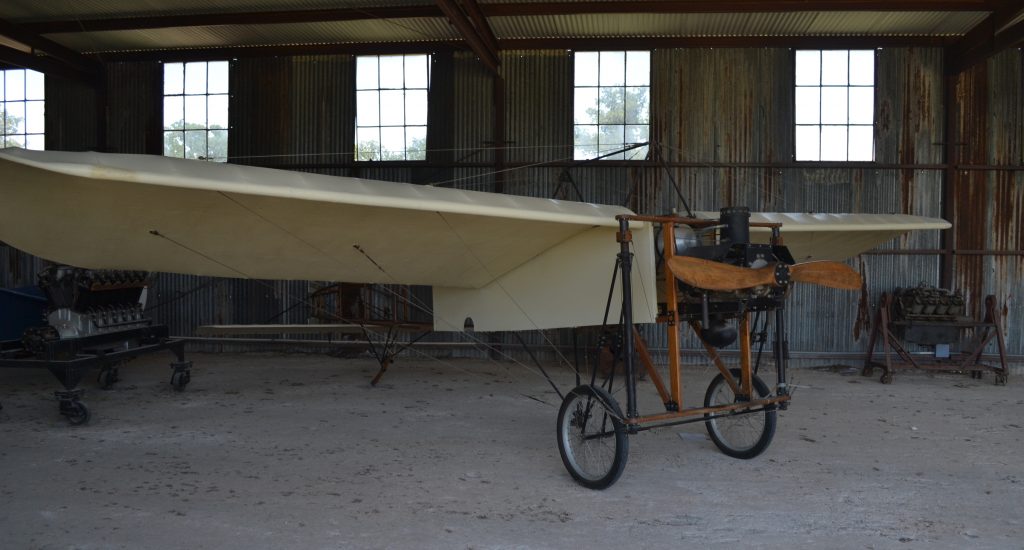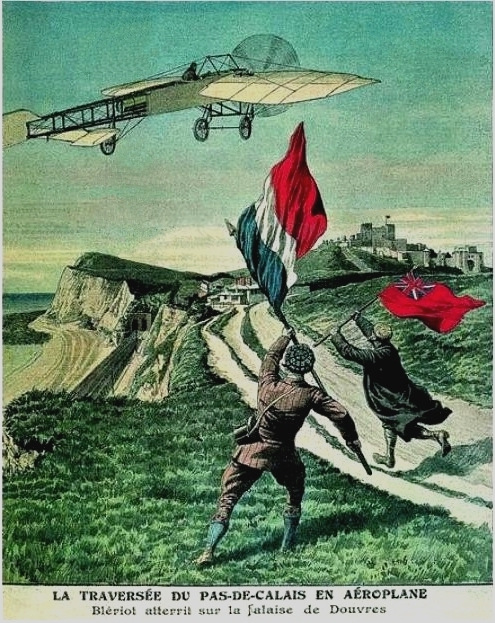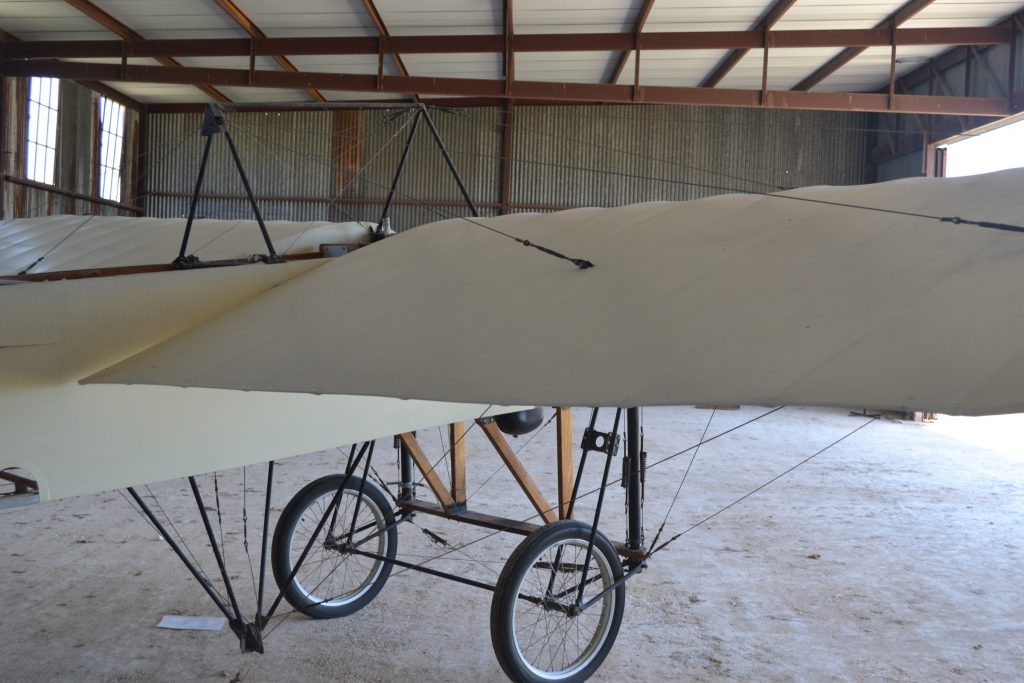
Having introduced the first practical automobile headlight, French businessman Louis Blériot became sufficiently well off to begin experimenting in the nascent science of aviation. Beginning shortly after 1900 with ornithopters, machines that fly by flapping their wings in bird-like fashion, he was less than successful with the necessarily complicated and heavy contraptions and turned his attention instead to fixed-wing gliders and powered aircraft in 1905.
His first attempts were unsuccessful, but he persevered and in 1907 developed the world’s first successful monoplane. This was the Blériot VII, which flew on 16 November 1907. In December he was able to fly for distances of over 500 meters, and also turn enough to reverse his course. Although the Wright brothers of the USA had made far greater advances, they were not well known, and Bleriot’s flights were the most advanced yet seen in Europe.
Blériot continued developing his designs, successfully covering a distance of 28 km in October 1908, in his Blériot VIII. In December 1908 he had three designs on display at the Paris Aeronautical Exposition, including what was to become his most successful model, the Blériot XI.
In 1908, London’s Daily Mail newspaper had offered a £500 prize for the first heavier-than-air flight across the English Channel, but the prize went unclaimed. The following year the newspaper doubled the prize to £1000. Blériot announced that he would attempt to claim the prize. On the 25th of July, 1909, Blériot took off from a farm at Les Baraques, between Calais and Sangatte. Flying at about 45 mph and 250 feet altitude, he first followed a steamer that was going to Dover, but he quickly left the ship behind. Despite low visibility, he maintained his course well enough that he soon saw land ahead. After a flight of 36 minutes and 30 seconds, he landed in Northfall Meadow near Dover Castle.

The pioneering days in aviation preceding WWI were an exciting time of great experimentation and innovation as the science of manned flight was brand new and practically unknown. Louis Blériot was one of the major players in this very early period in aviation and his achievements undoubtedly paved the way for many designers, manufacturers, and pilots to come

Our Blériot XI is an airworthy replica that is built as near as possible to the original channel-crossing aircraft, although fitted with a more reliable modern engine. However, due to severe limitations in maneuverability imposed by the authentic wing warping system used for roll control, and the inefficiency of the early airfoil, this aircraft is considered “somewhat less than entirely comfortable” to fly and is currently on static display.
General characteristics
Length: 25 ft. 0 in. (7.62 m)
Wingspan: 25 ft. 7 in. (7.79 m)
Height: 8 ft. 10 in. (2.69 m)
Seats: 1
Empty weight: 507 lb (230 kg)
Max. Speed: 47 mph (76 km/h)